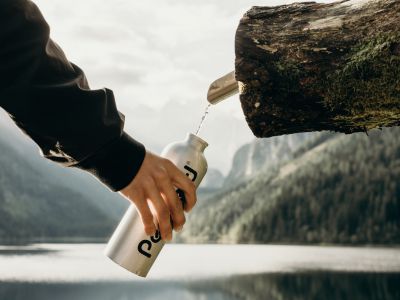Filtering flasks: How do they work? One of the most important things when hiking in the open air is to have a good amount of drinking water with us at all times. Apart from the basic function of keeping us hydrated, especially in high temperatures, water can serve many other needs. Whether you have one or more flasks, or whether you decide to carry disposable bottles, the weight on your back can be a major hindrance during the trip. Let's see how one item can help us in this situation.
One of the most important things when hiking in the open air is to have a good amount of drinking water with us at all times. Apart from the basic function of keeping us hydrated, especially in high temperatures, water can serve many other needs. Whether you have one or more flasks, or whether you decide to carry disposable bottles, the weight on your back can be a major hindrance during the trip. Let's see how one item can help us in this situation.One water bottle, long life We can solve the problem of weight and bulk by purchasing a filtering water bottle. This will also allow us to drink the water we find on our excursion directly, or to filter the water from the taps when we find ourselves in places or situations where we cannot be sure that it is purified. There are many types of filtering flasks on the market; the cost varies between 20 and 40€, without taking into account the price of the replacement filters, which must be changed after 700/1000 litres of filtered water, depending on the model of flask you buy. How do they work? Visually they look exactly like ordinary water bottles, but inside the cap is the purifying filter. Once filled, the water is filtered before it reaches the spout/cannula. It only takes a few seconds for the filter to purify the water, in some cases eliminating up to 99% of bacteria and viruses. Almost all filters work with activated carbon or ions and in both cases the purification results are practically the same, with the added advantage of improving the taste of the water once purified. There are also ecological filtering flasks on sale, whose carbons are made from recycled organic material, but unfortunately they do not have the same antibacterial power as the other types. The 'traditional' solution To make water safe to drink, you can also use the 'old-fashioned' system: purifying tablets. In this case, all you have to do is dissolve one or more tablets in the water (depending on the quantity) and wait for them to take effect. There are two main 'cons' of the tablets: a longer waiting time before drinking the purified water and a not always pleasant taste due to the active ingredients of the tablet. Have you tried one or more of these solutions? Let us know. Write to us! Photo: Kate-joie |
